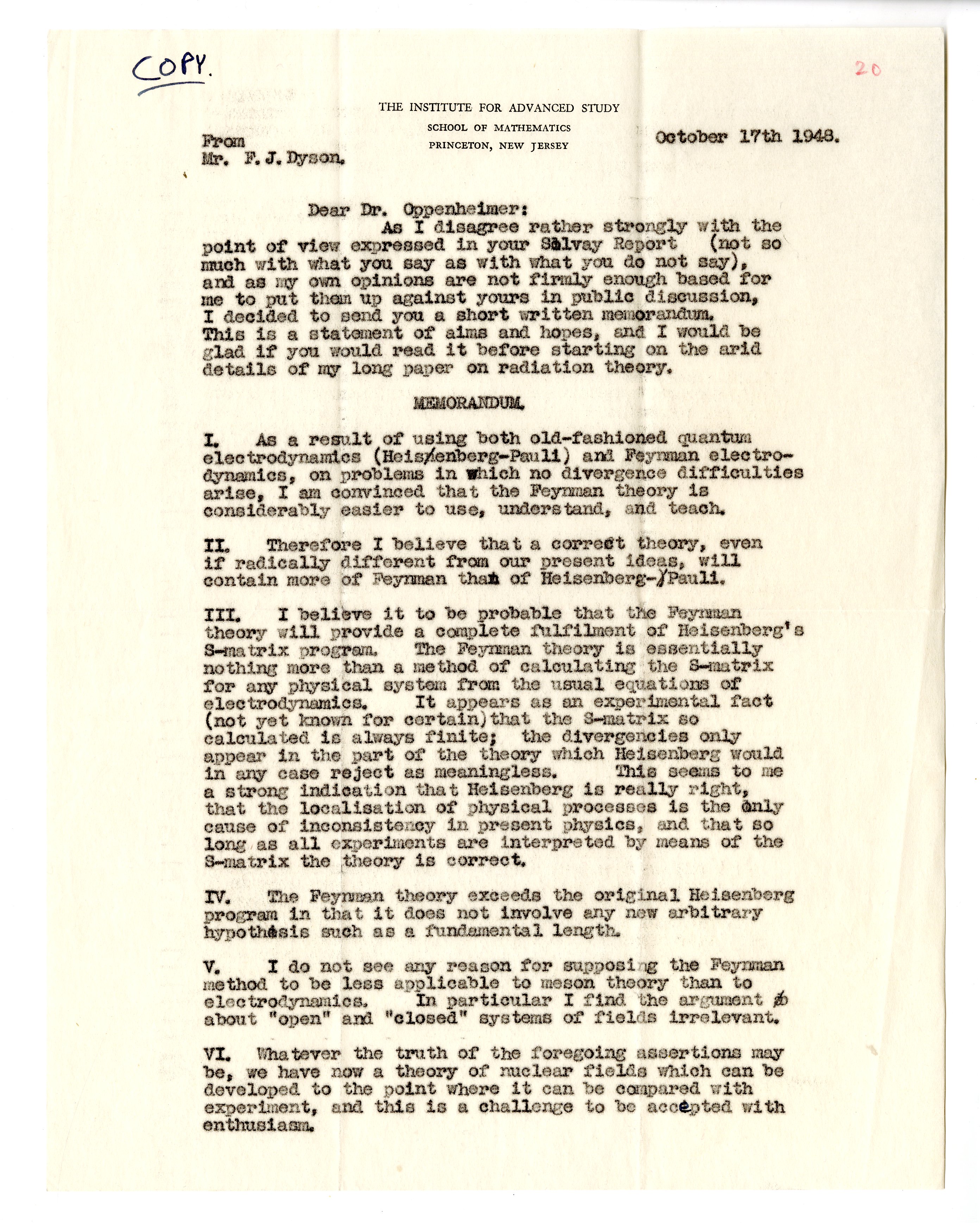Freeman Dyson Proves Robert Oppenheimer Wrong
Header Image: Dyson appointment letter to Institute for Advanced Study Dyson Papers, Ms Coll 238, Box 20, Folder 33.
Mathematical physicist Freeman Dyson (APS 1976) spent over 65 years as a full-time faculty member at the Institute for Advanced Study (IAS) in Princeton, NJ. He was ultimately hired by Robert Oppenheimer (APS 1945) in 1953, but their earlier interactions in 1948 during a year-long appointment are of interest.
Oppenheimer was a formidable character in academic physics, where debates can be hard-edged. Oppenheimer could be aloof from questions that bored him or disconcertingly probing with ideas he found interesting. Dyson believed that even if the approaches in the theories of QED of Julian Schwinger, Richard Feynman and Shinichiro Tomonaga (APS 1966) looked different, they were the same theory in different forms. Dyson defended himself in a series of lectures that Oppenheimer attended. Finally, rather than talking directly to Oppenheimer to get through to him, Dyson wrote him the following letter:

One day Dyson went to his mailbox and found the following note:

Dyson was right, and Oppenheimer conceded and pled “nolo contendere,” no contest. Schwinger, Feynman, and Tomonaga would win the 1965 Nobel Prize for Physics for their “fundamental work in quantum electrodynamics, with deep-ploughing consequences for the physics of elementary particles.” (note: Only up to 3 people can share the Nobel).
Still a young man, Dyson had not decided the best course for his career. He was offered a professorship at Columbia, and the directorship of the Royal Observatory at Greenwich, but, the administrative side of these positions did not appeal to him. Seeking at least to stay in the U.S., Dyson called Oppenheimer to ask if he could offer help. There was, indeed, and Dyson happily ended up at IAS. Oppenheimer sent him the appointment letter at the top of this.
Oppenheimer remained director until 1966; he died of cancer in 1967. He had moved out of the director’s residence into a place next to the Dysons. Letters in Maker of Patterns have observations about his last days. Dyson never left the Institute, taking emeritus status in 1994, 27 years after Oppenheimer’s death.
The finding aid to the newly-processed Dyson Papers at the APS may be found at: https://as.amphilsoc.org/repositories/2/resources/3356

